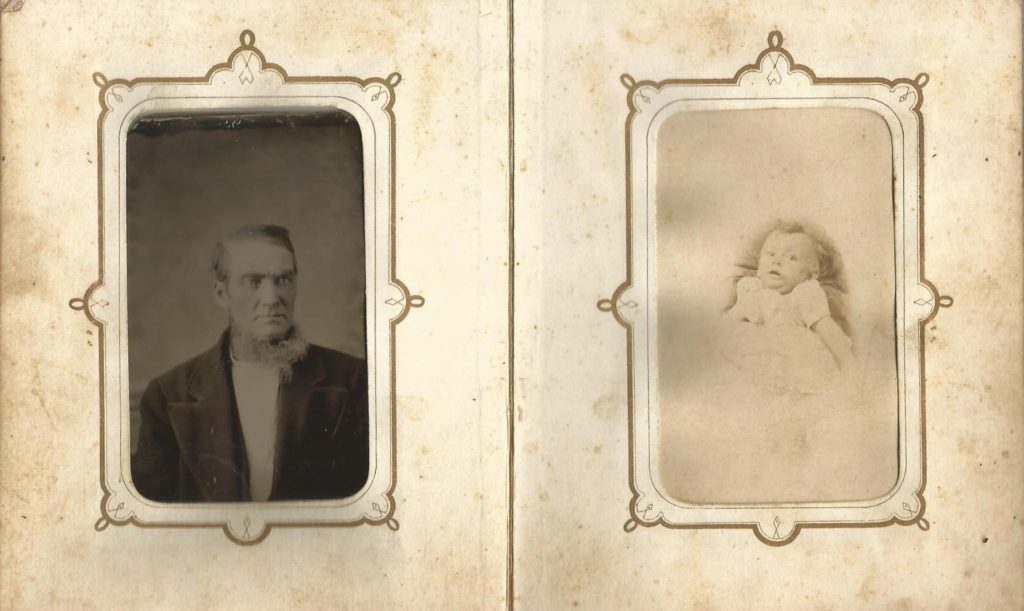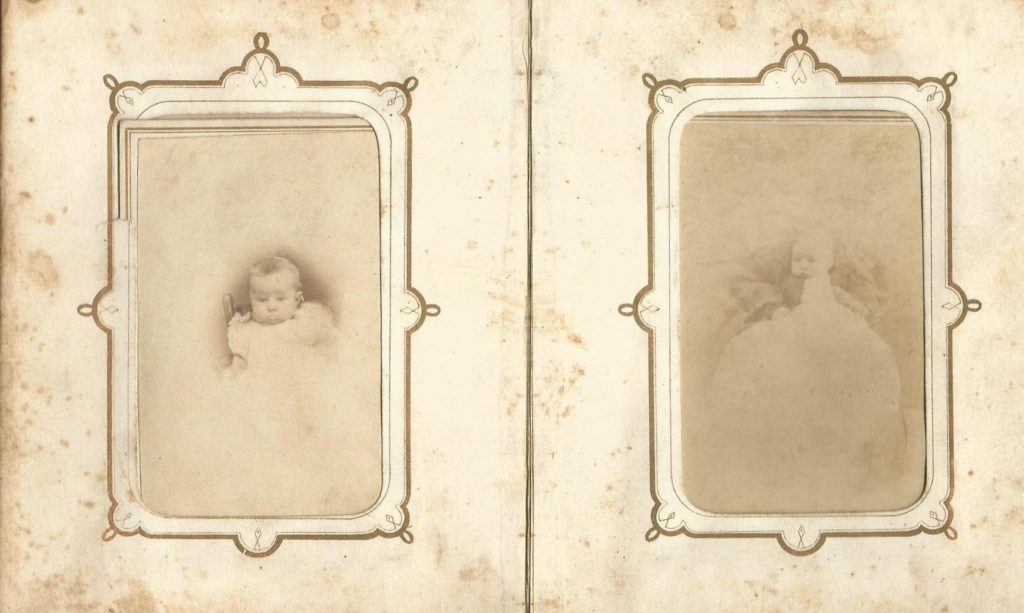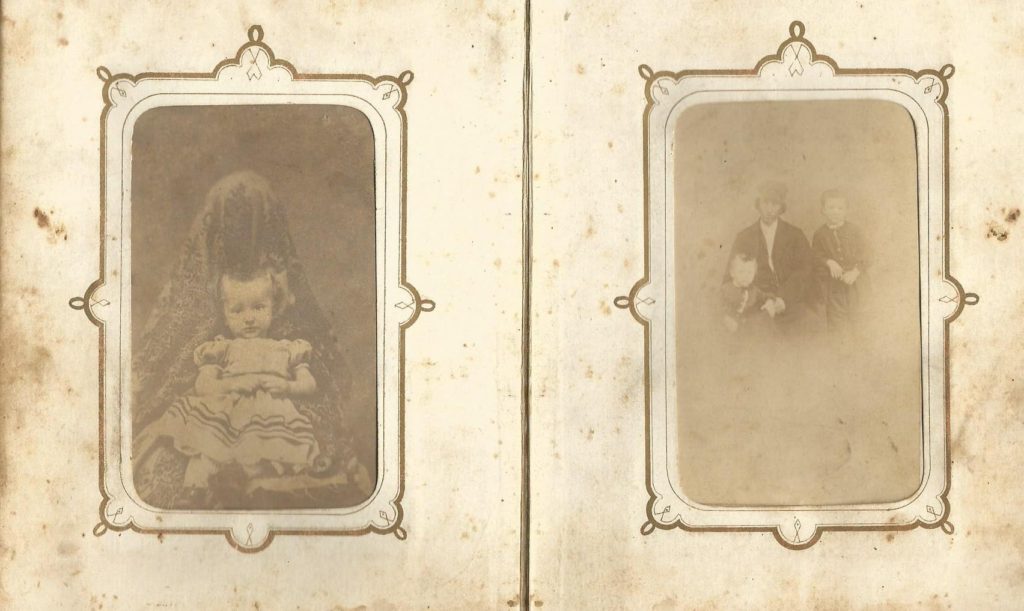The Clutter Family of Pennsylvania, Ohio, and California- A Photo Album, Part 2

Benjamin Family, McMurray Family (Click for Family Tree)
If you have ever attempted a multi-generation family portrait that included children less than about four years old, you may remember the challenges in encouraging (begging? bribing?) those children to sit still, get into a cute pose, and be patient while the other subjects get wrangled. (How do photographers do it??) Babies are hard too, especially if one is trying to photograph a child who does not yet sit up. These photographers solved the problem by having someone hold on to the baby. In the above right picture, the wrinkled dress of (probably) the mother can be seen in the background, and photographer created an oval to showcase the child and quickly faded the image out into the background so that the baby was the focus of the picture, not mom holding the babe.
In the picture below, on the right, the mother can definitely be seen behind the child since the photographer was trying to show the big poufy christening dress. Both of the sleeves are slightly visible in the mother’s dress, so if the picture was restored, we might be able to date it by some of the details on the mother’s dress. Sometimes children were gently tied into a chair, which may be the case with the image on the left since a chair back can be seen.

Th baby below on the left has an adult behind but covered up to disguise the mother. It does look like some of the ‘death portraiture’ of that era, also called, “memento mori.” It looks as if the baby’s head is being held straight, which is the clue that suggests the occasion for the studio image was the death of a child. Eyes would often be painted on the dearly departed’s image so it is sometimes hard to determine whether the child was alive or dead.

The image of the man on the right with the two children looks somewhat similar to the man on the right in the image of “two gents” seen in the first post of this series on the Clutter album. Do you think it could possibly be the same man? Since photos were expensive and most rural folk did not have easy access to a photographer an image would generally be taken only with family members, so this picture is likely a man and his sons- or is the older child a daughter? These children do look a bit like the babies in some of these pictures to this unprofessional eye. It would seem logical though that all the persons in these photos from the album are closely related. And it therefore would seem that they would be closely related, or related by marriage, to Frances “Fannie” Drucilla Benjamin Clutter who married Emmanuel Clutter, since the album was passed down in the Benjamin family.
Do you know who the man is that is pictured on the left of the top image in this post? He is another of those mystery people. Since it was a tintype, the date of the photo could be as early as 1856 when tintypes were invented. Newer technology emerged within 10-15 years, but tintypes remained in use
Research has not helped us to find out more about the last few photographers to help date the images- yet. We hope that Clutter family descendants are out there who may have the key to helping us identify these folks by sharing information and images they may have in their old family photo archive. It doesn’t matter if your pictures do not have names and dates, as we could infer information about the movement of the Clutter families. Please comment on this article or use our contact form to share what you may know about this family.
Next: Emmanuel Clutter and Frances “Fannie” Drucilla Benjamin Clutter
Notes, Sources, and References:
- Clutter Family photo album- thanks, dear cousins (you know who you are!) for preserving this album and sharing!
-
“Taken from life: The unsettling art of death photography,” is an interesting but also unsettling look at death portraits, especially of children, and some of the reasons families took these photos. https://www.bbc.com/news/uk-england-36389581
Click to enlarge any image. Please contact us if you would like an image in higher resolution.
We would love to read your thoughts and comments about this post (see form below), and thank you for your time! All comments are moderated, however, due to the high intelligence and persistence of spammers/hackers who really should be putting their smarts to use for the public good instead of spamming our little blog.